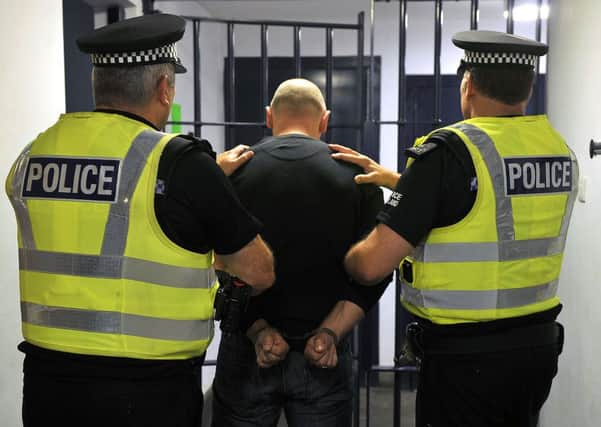Break-ins stop at burglary hot spot after police pilot
This article contains affiliate links. We may earn a small commission on items purchased through this article, but that does not affect our editorial judgement.


The Killearn and Blanefield areas were targeted by organised criminals in 2014, but since the initiative was launched by police the thefts have stopped.
Police Scotland provided around 600 SmartWater kits to homes following the break-ins and local officers were also trained in how to use the product and help householders register it online.
Advertisement
Hide AdAdvertisement
Hide AdProduced by SmartWater Technology, each kit contains a solution that is brushed onto a home owner’s possessions.
Only detectable under UV light, it then retains DNA evidence from anyone who touches it, providing a definite link between a criminal and a crime scene in the event of a burglary.
Signs alerting potential criminals that SmartWater in use in the area was said to be “crucial” to its success.
Police revealed to Stirling Council’s public safety committee that the number of instances of house break-ins in the pilot area had dropped from 23 to zero as a result.
The area was picked for the national pilot after a “significant spike” in house break-ins in the area, which is said to be easy to access for criminals travelling by car from Glasgow.
Householders in the area had also had items stolen which were suitable for the SmartWater solution, and residents were said to be “likely to engage” with the pilot scheme and use the product.
Superintendent Matt Richards, of Police Scotland, said: “It has been really successful in terms of feedback from the public, because another criteria for choosing an area was how many members of the public had house breaking as a number one concern.
“Initial analysis to the end of last year was that there had been around 23 house break-ins in the area in 2014.
Advertisement
Hide AdAdvertisement
Hide Ad“It doesn’t seem like a huge number but these were professional house break-ins by travelling criminals and the figure dropped to zero.
“We know they were pretty organised criminals and you don’t want these people in your communities.”
Committee chair Councillor Martin Earl said: “What I’d like to do on the basis of what we have heard is to look into how we could do this in as quick and effective manner as possible. For example, we would like to know more about the products available, costings and how we can work with the police to get this out to other communities.”
Supt Richards said: “Because local police officers are already au fait with it and it has been successful it should be relatively smooth. You have to get good signage out, which is crucial because you want criminals to know.”
Councillor Scott Farmer asked if there was any evidence that the problem had simply been displaced, causing a disproportionate impact on other areas.
Supt Richards told the committee there was advice on how to prevent or minimise the danger of that, and while it had been an initial concern of the first pilots in Edinburgh, there seemed to have been no displacement.
DOWNLOAD THE SCOTSMAN APP ON ITUNES OR GOOGLE PLAY
